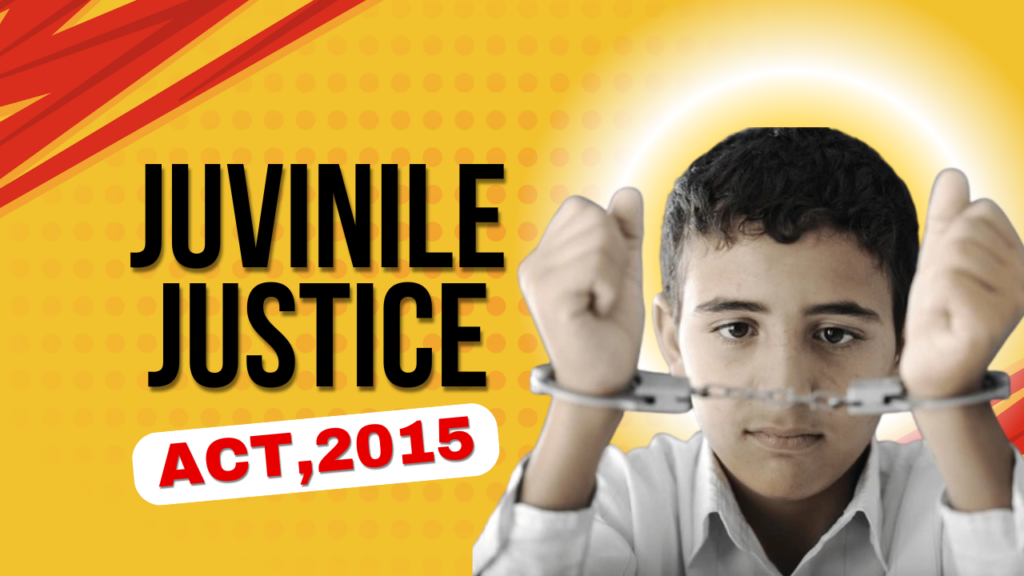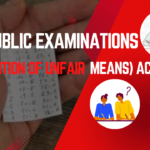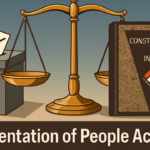Juvenile justice is a legal framework that treats children (persons under 18) differently from adults, focusing on rehabilitation and protection rather than punishment. In India, this system is grounded in child rights: the Juvenile Justice (Care and Protection of Children) Act, 2015 (often called the JJ Act 2015) embodies these principles . The Act aligns with international norms (like the UN Convention on the Rights of the Child) by recognizing every “child” as under 18, and by promoting a child-friendly justice system . Under the Act, the primary goal is to safeguard vulnerable children and juvenile offenders through rehabilitation, education, and social reintegration . This introduction examines key concepts of juvenile justice in India and why it matters, especially for students and legal professionals concerned with child rights in India.
Legal Definition of “Juvenile” in India
The Juvenile Justice Act defines a “child” (or “juvenile”) as any person below 18 years of age . In legal terms, India’s juvenile delinquency law is framed around this age threshold: any person who has not completed 18 years of age at the time of an offense is a juvenile . The Act distinguishes two categories:
- Child in Conflict with Law (CICL): A child who is alleged or found to have committed an offence .
- Child in Need of Care and Protection (CNCP): A child who is orphaned, abandoned, abused, exploited, missing, runaway or otherwise lacking adequate care.
Thus, under Indian juvenile law a “juvenile” is synonymous with a “child” below 18 years, except that the Act (for the first time) allows juveniles aged 16–18 to be tried as adults in heinous cases (after special inquiry) . In practice, the Juvenile Justice Board assesses whether a 16–18 year old can be held responsible as an adult (based on mental and physical maturity) for offences with minimum punishment of 7 years or more . This judicial waiver system was a major 2015 reform debated extensively after the 2012 Delhi gang-rape case.
Evolution and Background of Juvenile Law in India
India’s juvenile justice system has evolved through several laws. The Juvenile Justice Act, 1986 first codified child justice, emphasizing reform and protection. In 2000, this was replaced by the Juvenile Justice (Care and Protection of Children) Act, 2000 to align with the UN Convention on the Rights of the Child. The 2000 Act broadened definitions and rights for juveniles. In 2015, following public concern over juvenile crime (e.g. the 2012 Delhi gang-rape by a minor), Parliament enacted a new Juvenile Justice Act. This JJ Act 2015 was designed to modernize juvenile law in India and fill gaps in the earlier Acts .
The 2015 Act (enforced from 15 Jan 2016) “consolidate[s] and amend[s]” laws relating to children in conflict with law and children in need of care . It gives “proper care, protection, development, treatment [and] social re-integration” to children, adopting a child-friendly approach . The Act fulfilled India’s commitments as a signatory to international instruments (UNCRC, Hague Adoption Convention, etc.) . In practice, the 2015 law expanded the child welfare framework and created new institutional mechanisms (like foster care and strengthened adoption procedures) while retaining the core juvenile justice principle that children must be treated differently from adults .
Key Features of the Juvenile Justice (Care and Protection of Children) Act, 2015
The JJ Act 2015 introduced several important provisions and features. Key highlights include:
- Age-Based Definitions: It defines a child as anyone under 18 and sets legal criteria for children in conflict with law and in need of care .
- Juvenile Justice Board (JJB): Every district has a JJB to adjudicate cases of juveniles in conflict with law. Each Board comprises one judicial magistrate and two social workers (at least one of whom is a woman) . JJBs handle trials involving juveniles, ensuring child-friendly procedures (no formal dress, simplified language, etc.) and focus on rehabilitation rather than punishment .
- Child Welfare Committee (CWC): For CNCP cases, the Act mandates at least one CWC in each district. A CWC has one Chairperson and four members (at least one woman) . CWCs conduct inquiries into the needs of vulnerable children (orphans, abused children, etc.) and can order placement in suitable care or protective services.
- Offence Categories: The Act classifies offences by children into three categories :
- Petty Offences: Maximum punishment up to 3 years (e.g., minor theft) .
- Serious Offences: 3 to 7 years (e.g., assault, burglary) .
- Heinous Offences: Minimum punishment of 7 years or more (e.g., murder, rape) .
- Trial as Adult for Heinous Crimes: For the first time in India’s law, juveniles aged 16–18 who commit heinous offences may be tried as adults after a preliminary assessment by the JJB . This assessment looks at the child’s mental and physical capacity to commit the crime and understanding of its consequences . If the JJB finds the juvenile acted with adult-like intent, the case is transferred to a normal criminal court for trial. This provision (Section 15 of the Act) was controversial but remains a key feature of the JJ Act 2015.
- Adoption and Foster Care: The Act significantly reformed adoption and care structures. The Central Adoption Resource Authority (CARA) was made a statutory body to streamline adoption processes . Most importantly, foster care was introduced: trained families can register to foster vulnerable children temporarily, with the state providing financial support . The Act also grants power to District Magistrates (not just courts) to issue adoption orders (amended in 2021) to expedite the process.
- Special Juvenile Police Units: Police officers in each district must belong to a Special Juvenile Police Unit (SJPU) trained to handle juveniles. A child in conflict must be taken to a SJPU and presented to the JJB within 24 hours . Under no circumstances can a juvenile be kept in an adult lockup or jail; they must be placed in an observation home pending the JJB hearing .
- Increased Protection for Children: The JJ Act also includes other provisions like a ban on corporal punishment (punishable by fines/jail) and criminalizes giving alcohol or drugs to children . It protects children’s rights at every stage; for example, the Board must ensure the child’s family is present and a translator is provided if needed .
Overall, the JJ Act 2015 modernized juvenile law in India by balancing child protection with necessary legal safeguards, and by expanding the focus beyond delinquency to all vulnerable children.
Juveniles in Conflict with Law vs. Children in Need of Care and Protection
The Act clearly separates juveniles in conflict with law (CICL) from children in need of care and protection (CNCP).
- Children in Conflict with Law: This category covers any child (under 18) alleged to commit a crime. Such cases go to the Juvenile Justice Board. The Act provides a child-friendly trial process: for example, there is no formal cross-examination of the child by the police, and juvenile records are sealed. After hearing a case, the JJB has discretion to release the juvenile with admonition, place the child on probation, or (for serious convictions) order placement in a Special Home for rehabilitation. Appeals from JJB orders lie first to a Children’s Court and then to higher courts .
- Children in Need of Care and Protection: These are children who have not committed crimes but lack proper care. This includes children who are orphaned, abandoned, homeless, missing, disabled without support, abused/trafficked, or forced into labor. Cases of CNCP are brought before the Child Welfare Committee. The CWC can order the child to be placed in a suitable Children’s Home, put under foster care, or arrange for guardianship. The CWC also supervises protection for such children and coordinates with government and NGOs to meet their needs.
In practice, a child may move from one category to another; for example, a juvenile in conflict found to be abused may be handed over to a CWC. The JJ Act 2015 ensures that both groups are handled through non-adversarial, care-centric procedures, reflecting India’s commitment to child-centric justice .
Juvenile Justice Boards (JJB) and Child Welfare Committees (CWC)
The Juvenile Justice Board (JJB) and Child Welfare Committee (CWC) are the cornerstone institutions of the juvenile justice system in India. Their roles are distinct:
- Juvenile Justice Board: Constituted in every district for CICL cases, the JJB is a quasi-judicial body. Its composition is:
- One Judicial Magistrate of First Class (or metropolitan chief judicial magistrate) with 3+ years experience.
- Two social workers (one of whom must be a woman) with at least 7 years’ experience in child welfare or a related degree (in law, sociology, psychology, etc.) .
The JJB conducts inquiries in a friendly atmosphere (no formal court dress or strict procedures). It ensures the child’s rights are protected during the process. It may ask for medical or psychological assessments. Crucially, if a case involves a 16–18 year old accused of a heinous offence, the JJB holds a preliminary assessment considering factors like the juvenile’s mental capacity and understanding of consequences . Based on that, the JJB decides whether to transfer the case to an adult court or to retain it under the juvenile system.
Powers and Functions: Besides the preliminary inquiry, the JJB can order diverse dispositions under Section 15 of the Act (depending on severity), such as: releasing the juvenile with a warning or supervision, placing the child under the care of a fit person or institution, or sending the juvenile to a Special Home. The JJB must also ensure that juveniles are not held in adult prisons at any time .- Child Welfare Committee: The CWC deals with CNCP cases. There must be at least one CWC in each district . Its composition is:
- One Chairperson (a senior member of society) and four other members (minimum one must be a woman).
- Members are typically people who have worked with children (health, education, child rights) or professionals (law, psychology, social work) for at least 7 years .
Powers and Functions: Under Section 27 of the Act, the CWC has the power to make orders necessary for the care, protection, treatment, development and rehabilitation of the child. This includes placing a CNCP in appropriate care – for example, in a Children’s Home, in foster care, or with relatives – and ensuring the child receives education, health care and counseling . The CWC also supervises Child Care Institutions in its jurisdiction to ensure standards are met. Any person (police, family, NGOs) can bring a CNCP to the CWC’s notice.
Both Boards and Committees operate in a bench format, making decisions by majority (or by the Chair in case of a tie). Appeals are generally not available against CWC orders (except via writ petition). These institutions are vital for enforcing juvenile crime legal provisions fairly in each district.
Procedures and Rehabilitation Measures under the Act
Once a child is brought into the system (either as CICL or CNCP), the Juvenile Justice Act prescribes specific procedures and rehabilitation pathways:
- Police and Production: When a child is arrested or surrendered, they must be produced before the JJB immediately (within 24 hours) by the police or Special Juvenile Police Unit . During this time, the child stays in an Observation Home (not a jail). No formal bail is refused, and the JJB must decide on interim release or custody.
- Trial and Disposition: In the JJB hearing, evidence is taken in a child-sensitive manner. The Board then orders one of several dispositions (Sec. 15): admonition, counseling, probation, payment of fine, community service, placement under care of family, or placement in a Special Home. For the least serious offences, the JJB may release the child on probation with conditions. For serious/heinous convictions, the child can be sent to a Special Home for up to 3 years (or until 21st birthday, whichever is earlier).
- Correctional Institutions: The Act establishes Observation Homes (temporary shelter for accused juveniles pending trial) and Special Homes (for convicted juveniles, similar to a juvenile correctional facility). Girls are sent to separate homes, and there are provisions for disabled or HIV-positive children. The law mandates these institutions provide education, vocational training, recreation and counseling . Children’s Homes are similar institutions for CNCP children (especially girls or children with disabilities).
- Aftercare and Reintegration: Importantly, rehabilitation continues even after release. The Act provides for After-Care Organisations – halfway homes where juveniles can stay before full reintegration. These organisations offer vocational training, therapeutic counseling, continuing education and life-skills to prepare youth for society . For example, juveniles in aftercare receive vocational training, psychological therapy, education and guidance on social values and financial independence . Regular follow-up by probation officers or social workers is mandated to ensure successful reintegration.
- Non-Institutional Care: Beyond institutional facilities, the JJ Act introduced non-institutional care measures. Key among these is foster care, where children can be placed in approved family homes (different from normal adoption) with state support . There is also sponsorship, where individuals or groups provide financial assistance to children’s programs. Adoption is streamlined under the Act, with swifter procedures and statutory oversight by CARA .
Throughout these procedures, juveniles have rights to counsel, protection from exploitation, and privacy. In fact, the Act explicitly bans exposing juvenile identities. Every step aims at reforming the juvenile and supporting the child’s growth into a responsible adult, rather than merely punishing wrongdoing .
Criticism and Implementation Challenges
While the Juvenile Justice Act 2015 is lauded for its child-centric approach, implementation has faced hurdles:
- Infrastructure Gaps: Despite legal mandates, many states have not fully established required bodies. A 2019 report noted only 17 of 35 states/UTs had all essential structures (JJBs, CWCs, homes) in every district . This means some areas lack a functioning JJB or CWC, delaying justice and protection.
- Misclassification of Children: Enforcement lapses are stark. A recent study found 9,681 children under 18 were wrongly held in adult prisons between 2016–2021 . Often police record incorrect ages, leading to incarceration in jails instead of juvenile homes, violating the law. Former Supreme Court Justice R. Bhat has called for state accountability and compensation for such errors .
- Resource and Socioeconomic Inequity: Courts have observed that poor juvenile offenders often remain detained for lack of bail, while wealthy youths secure release quickly . This disparity undermines fairness. Moreover, many observation and special homes are overcrowded or underfunded, limiting effective rehabilitation.
- Quality of Board Functioning: There have been criticisms of JJBs themselves – for example, undue political influence in appointing social worker members has been reported . In some cases, JJBs have applied adult standards to juveniles improperly (e.g. flawed age determination by bone tests).
- Societal Challenges: Stigma against former juvenile offenders makes reintegration hard. Additionally, while the law prohibits corporal punishment, incidents of abuse in some institutions still occur.
In sum, implementation gaps (from inadequate facilities to legal awareness among police) hamper the law’s ideals. Child rights activists urge better training for law enforcement, more child-friendly courts, stricter monitoring of child-care institutions, and awareness programs so all stakeholders (police, schools, families) can properly protect children under the JJ Act.
Conclusion
The Juvenile Justice (Care and Protection of Children) Act, 2015 is a landmark piece of juvenile law in India. It updated and consolidated past laws to create a more holistic juvenile justice system in India, emphasizing children’s best interests at every step. By defining clear roles for Juvenile Justice Boards and Child Welfare Committees, categorizing juvenile offences, and expanding rehabilitative options (like foster care and aftercare), the Act has strengthened child rights in India and provided a framework to address juvenile delinquency with compassion.
While challenges remain in its implementation, the JJ Act 2015 represents India’s commitment to handling juvenile crime through care rather than mere punishment. It recognizes that juveniles are not mini-adults but individuals whose personalities are still developing. By focusing on rehabilitation, education and reintegration, the law aims to transform young offenders into responsible citizens and to protect vulnerable children from harm. For students and legal professionals, understanding this Act is crucial, as it embodies the balance of justice and humanity in India’s approach to juvenile delinquency.


